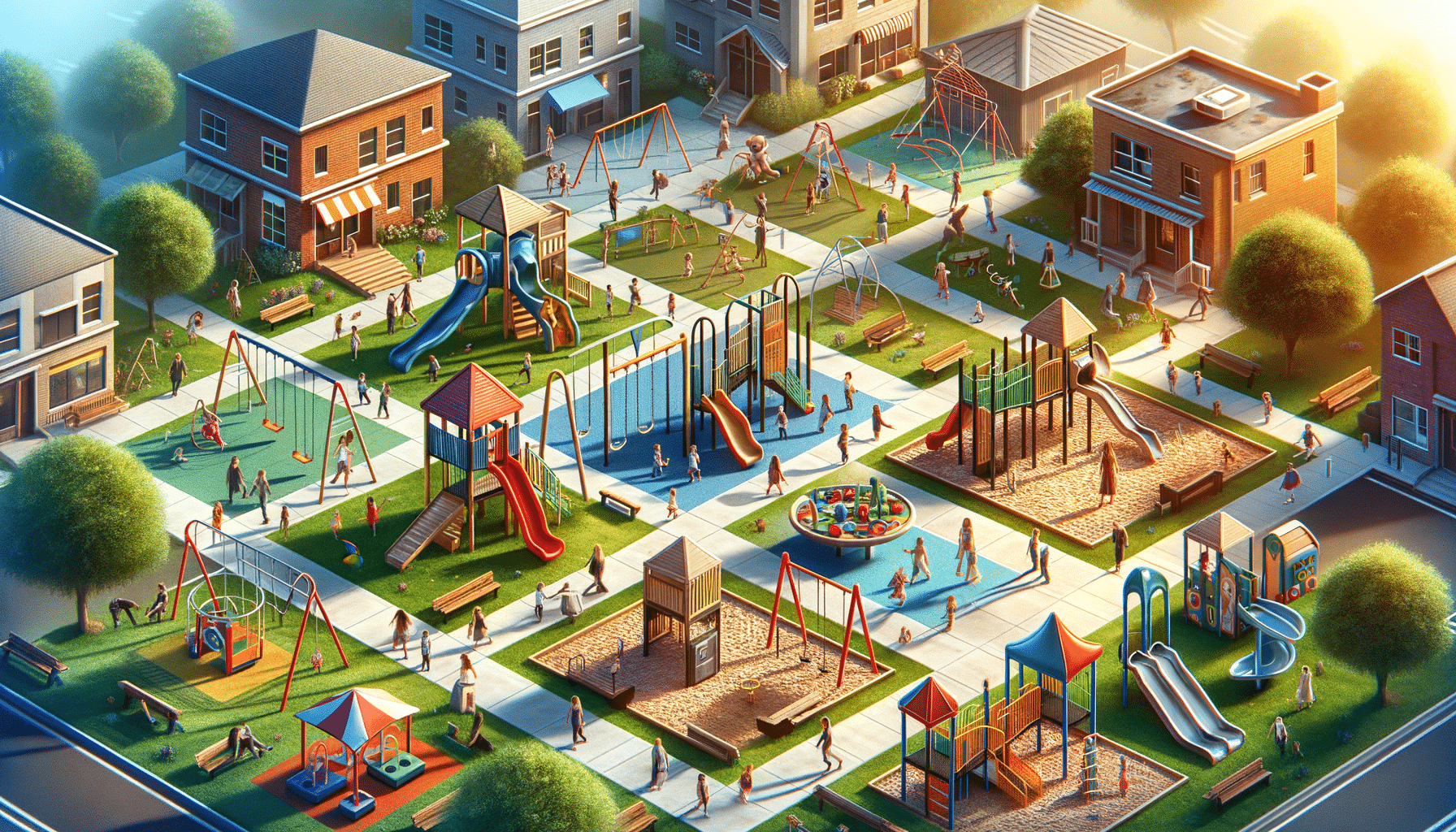
Choosing the Right Playground Equipment for Your Community
Introduction to Playground Equipment
Playgrounds are vital spaces for children’s physical, social, and cognitive development. They offer a unique environment where children can explore, imagine, and interact with peers in a safe setting. The right playground equipment can significantly enhance these experiences, making it essential for communities to choose wisely. This article delves into the types of playground equipment available, their benefits, and the safety considerations necessary to create a thriving play area.
Types of Playground Equipment
Playground equipment comes in various forms, each designed to cater to different age groups and developmental needs. Traditional equipment like swings, slides, and seesaws remain popular due to their simplicity and effectiveness in promoting physical activity. Swings, for instance, help children develop balance and coordination, while slides encourage climbing and spatial awareness.
Modern playgrounds often incorporate innovative designs such as climbing walls, rope courses, and interactive panels. These additions not only provide physical challenges but also stimulate cognitive skills and creativity. Climbing walls, for example, require strategic thinking and problem-solving, making them an excellent choice for older children.
Inclusive playgrounds are gaining traction, featuring equipment accessible to children of all abilities. These playgrounds include features like wheelchair-accessible swings and sensory play panels, ensuring every child can participate and enjoy the play area. By offering a diverse range of equipment, communities can create inclusive environments that promote equality and social interaction.
Benefits of Playground Equipment
Playground equipment offers numerous benefits beyond mere entertainment. Physically, it encourages children to engage in activities that improve their strength, flexibility, and endurance. Regular play on equipment like monkey bars and balance beams helps develop core muscles and enhances motor skills.
Socially, playgrounds are crucial for fostering interactions among children. Equipment that encourages group play, such as merry-go-rounds and cooperative games, helps children learn teamwork, communication, and conflict resolution. These skills are invaluable as they grow and interact with others in various settings.
Moreover, playgrounds provide a safe environment for children to test boundaries and take risks, which is essential for building confidence and resilience. By navigating challenges like climbing structures or balancing beams, children learn to assess risks and develop problem-solving skills, preparing them for real-world situations.
Safety Considerations for Playground Equipment
Safety is a paramount concern when selecting playground equipment. Ensuring that the equipment meets safety standards is crucial to prevent accidents and injuries. Communities should look for equipment that adheres to guidelines set by organizations like the Consumer Product Safety Commission (CPSC) or the American Society for Testing and Materials (ASTM).
Regular maintenance and inspections are vital to keeping playgrounds safe. Checking for wear and tear, loose bolts, or sharp edges can prevent potential hazards. Additionally, using appropriate surfacing materials, such as rubber mulch or sand, can cushion falls and reduce injury risks.
Educating children and caregivers about safe play practices is equally important. Posting clear instructions and age-appropriate guidelines can help ensure that everyone uses the equipment safely. By prioritizing safety, communities can create play areas where children can explore and enjoy without unnecessary risks.
Creating an Engaging Playground Environment
Designing a playground that captivates and engages children requires thoughtful planning and creativity. Incorporating natural elements like trees, water features, or sand pits can enhance the play experience by providing diverse sensory stimuli. These elements encourage imaginative play and connect children with nature.
The layout of the playground is also crucial. Ensuring that pathways are accessible and that different equipment zones are clearly defined can help children navigate the space safely and independently. Providing seating areas for caregivers allows them to supervise comfortably, fostering a community-friendly atmosphere.
Community involvement in the design process can lead to a playground that truly reflects the needs and desires of its users. Engaging with families and children during planning stages can provide valuable insights and ensure that the final design meets the community’s expectations. By considering these factors, communities can create playgrounds that are not only safe and functional but also vibrant and inviting.